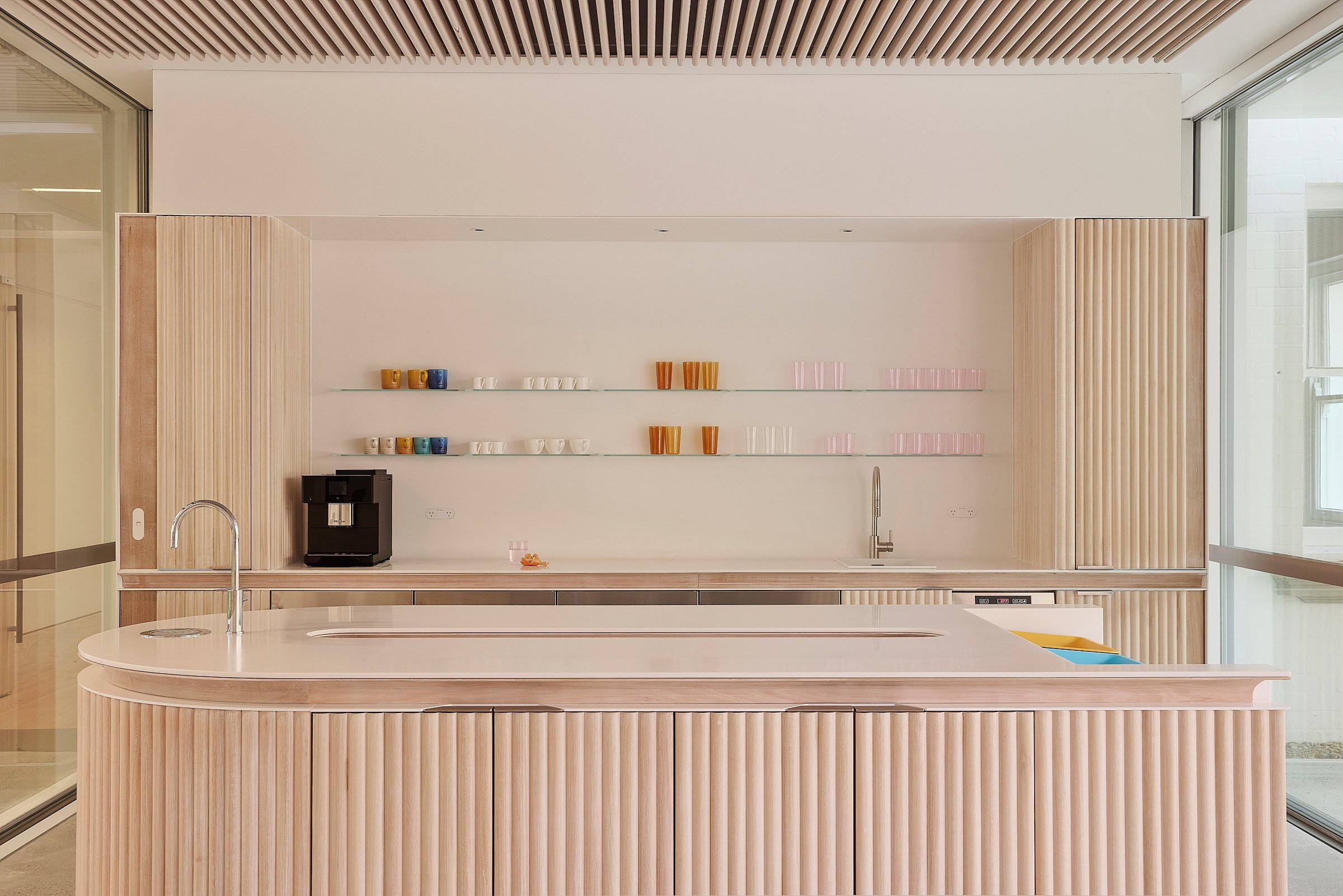Porta products are at the forefront of innovative and sustainable design projects, and the transformation of Campbell House, a late-1800s Federation home in New South Wales, into a contemporary private office space is a prime example. This case study showcases the creative vision of Tonkin Zulaikha Greer and the pivotal role our Porta Contours Tasmanian Oak - Riverine profile played in this stunning renovation.
Watch the Full Case Study Video below
See the full case study video below to explore how Campbell House integrates biophilic and sustainable design with Porta Contours Tasmanian Oak - Riverine profile. Thanks to The Local Project for supplying the footage and to Tonkin Zulaikha Greer for their assistance.
A Vision for Modern Workspaces
Nazia Kachwalla, architect at Tonkin Zulaikha Greer, faced the exciting challenge of transforming an 1890s home into a contemporary workspace. "Our brief was to transform what was an 1890s home into a contemporary workspace," says Kachwalla. The client’s focus on sustainability and biophilic design heavily influenced the project, making natural materials a cornerstone of the renovation. "We love natural materials because they last. The timber on the inside works back to the original timber floors," she adds.
Porta Contours: Elevating Aesthetics and Functionality
Porta Contours Tasmanian Oak - Riverine profile was chosen for the lining boards, seamlessly bridging the gap between the home’s historical charm and its new contemporary elements. The Riverine profile, with its unique half-round curve, adds a touch of elegance that speaks to the building’s historical features, including arched windows and ornate sandstone mouldings. This choice not only enhances the aesthetic appeal but also ensures longevity and durability, key aspects that Porta products are renowned for.
"The geometry of the half-round curve speaks to arched windows, bay windows, and ornate sandstone mouldings on the Federation building," Kachwalla explains. This thoughtful selection not only complements the Tasmanian Oak floors but also enhances the overall brightness and warmth of the space, showcasing the versatility and beauty of Porta’s products.
A Symphony of Sustainability and Biophilia
Sustainability is at the heart of Campbell House’s transformation. The renovation incorporates natural light and ventilation, significantly reducing the building's energy footprint. An array of solar panels meets the building's energy needs, while biophilic design elements blur the lines between indoors and outdoors. The central atrium, with vistas of a mature weeping fig tree, and seating elements extending into the garden create a harmonious connection with nature.
Porta Contours played a significant role in achieving this sustainable vision. The use of Tasmanian Oak, a renewable resource, underscores the commitment to environmentally friendly design while providing a natural, calming aesthetic that aligns with biophilic principles.
Honouring Heritage with Contemporary Flair
Tonkin Zulaikha Greer’s design meticulously preserves the heritage façade of Campbell House while integrating modern elements that enhance its historical features. Original bricks, windows, and parts of the gabled roof remain, providing a charming backdrop to contemporary additions like a glass wall around a new staircase and an open atrium. Recycled slate roof tiles and contemporary materials such as glass bricks, white bricks, and metal window reveals further elevate the building’s aesthetic.
Porta Contours Tasmanian Oak - Riverine profile was instrumental in this blend of old and new. Its application in the lining boards not only added to the visual appeal but also provided a seamless transition between different eras of design, proving the adaptability and excellence of Porta products.
Creating a Cohesive, Inviting Workspace
The renovation of Campbell House is a testament to how thoughtful design and materiality can seamlessly merge different eras into one cohesive, elegant workspace. Porta Contours Tasmanian Oak - Riverine profile plays a crucial role in this integration, celebrating the building’s heritage while creating a warm and inviting environment.
"The Riverine profile creates a link between the contemporary and historical spaces. The geometry of the half-round curve speaks to arched windows, bay windows, and ornate sandstone mouldings on the Federation building," says Kachwalla.
Porta: A Trusted Partner in Design Excellence
Campbell House stands as a beautiful example of how Porta products can enhance both historical and modern design projects. Our commitment to sustainability, quality, and innovation shines through in every project we are a part of. Porta Contours Tasmanian Oak - Riverine profile not only met but exceeded the expectations of both the architects and the client, proving once again why Porta is a trusted name in the industry.
For more information on how Porta can help bring your design vision to life, visit Porta.
Architect: Tonkin Zulaikha Greer
Video Footage: The Local Project
Photography: Cieran Murphy







